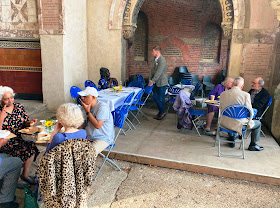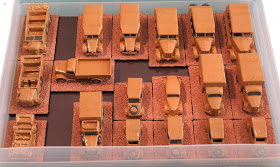Firstly, thanks to everyone who wrote a comment on yesterday’s blog post. By the time I got home from the hospital I wasn’t in the mood for answering each one individually, but I enjoyed reading them.
As you might gather, things did not quite go as I expected. Sue and I arrived at 1.00pm and whilst she remained outside in the waiting area, I was ushered into the Radiology Department. I waited there until nearly 1.45pm, at which point I was told to empty my bladder and then drink 350ml of water as quickly as I could.
At 2.00pm my bladder was subject to an ultrasound scan … and was found to be too empty. I then had to drink a further 350ml of water and at 2.30pm I had a second ultrasound scan … and this time I was told that the scar tissue from my colostomy was making it difficult to see how full my bladder was and that I was going to need to have a CT scan.
I was directed to a changing room and changed out of my clothes and put on a back-opening gown and non-slip socks. Once I had done this, I was taken into the treatment room and given a CT scan. This apparently satisfied the radiotherapists who were administering my treatment, and my prostate and its associated lymph nodes were then zapped with directional X-rays. Once this was done (and the zapping only lasted a few minutes) I was shown back into the changing room, and once I was dressed, I was allowed to leave. By this time it was 3.15pm and I was both hungry (I’d had no lunch) and bursting to go to the loo!
Apparently, the problem with my bladder is associated with my slow metabolic rate, and I take longer than the average person to pass water through my system. Therefore, as from today, I have to start the water drinking process at least an hour before my appointment to ensure that my bladder is full when I am given my pre-procedure ultrasound.
To add a further bit of confusion to my situation, at the end of today's treatment I was given a completely different schedule of treatment times from the ones I was given during my recent visit to Guy's Hospital, London Bridge. As a result, I am going to have to change a number of appointments I have already arranged, and I am definitely going to have to miss several important Masonic meetings that I was due to attend. This is somewhat annoying and inconvenient ... but the success of my radiotherapy is my most important concern and must take priority over everything else.






















